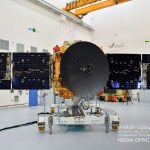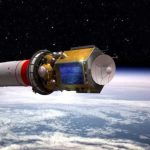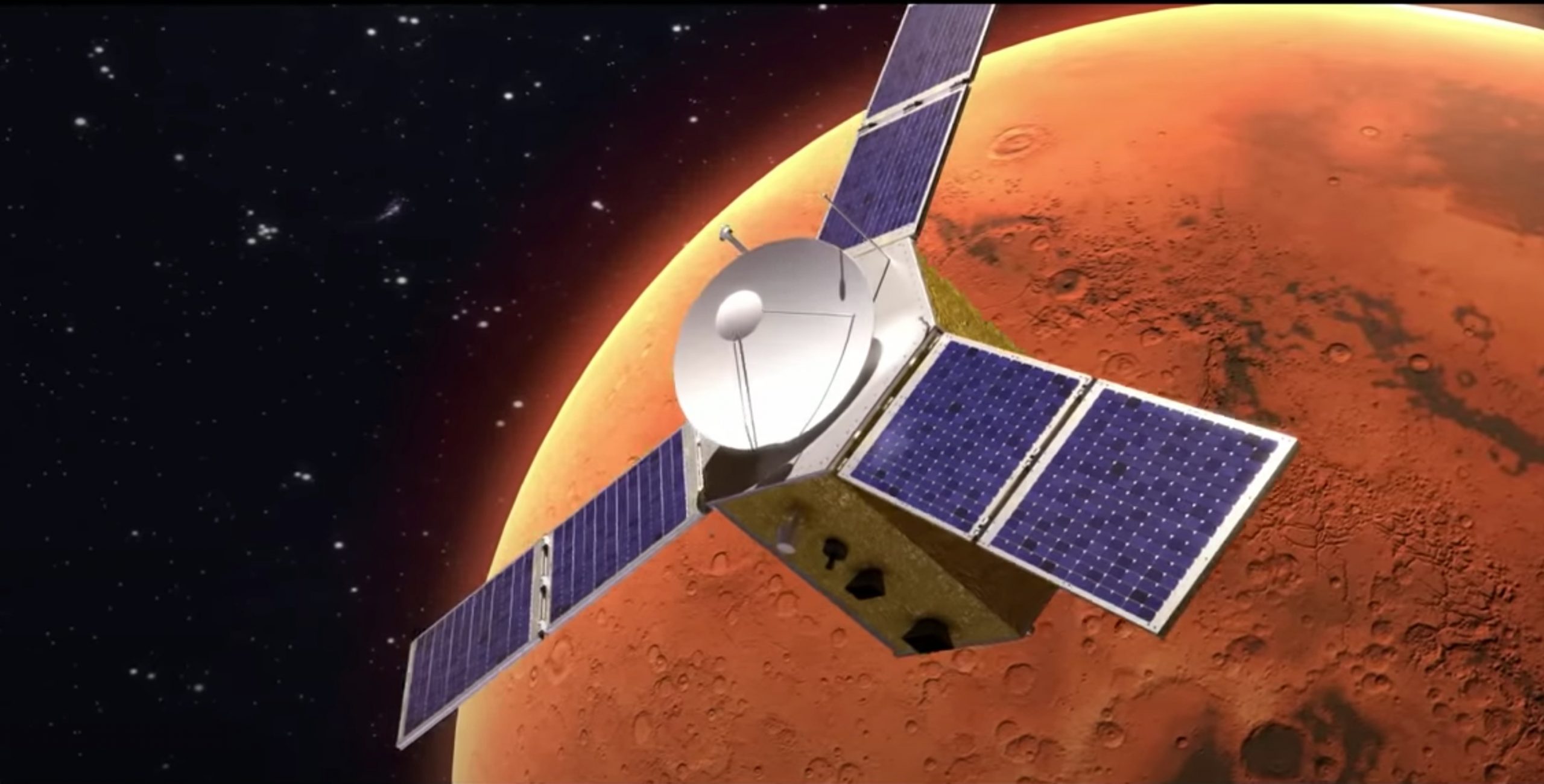
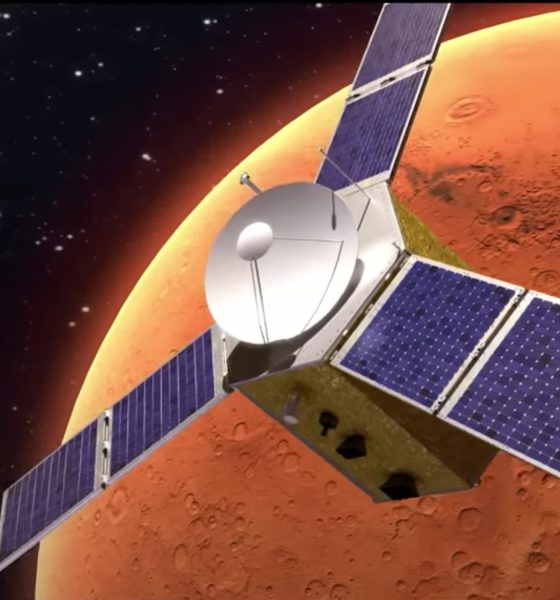
Space
United Arab Emirates enters Mars race with plans for summer mission
If all goes as planned, NASA’s Perseverance Mars rover will not be the only spacecraft headed to the red planet this summer. The United Arab Emirates Hope Mars mission, will join NASA’s newest Mars rover and a Chinese spacecraft, all set to launch in July.
“The Hope Probe project carries the hopes and ambitions of the Emirati nation and the aspirations of the Arab and Islamic people for a brighter future,” Sheikh Mohammed bin Rashid Al Maktoum, the prime minister of the UAE and Ruler of Dubai, said in a statement. “We seek to send a message of peace and hope to the world, and envision a glorious future in which knowledge and scientific expertise are freely shared between nations.”
The Hope Mars Mission, also called the Emirates Mars Mission, is the country’s first interplanetary satellite as well as the first planetary science mission to be led by an Arab-Islamic country. Like it’s Chinese and U.S. counterparts, the Hope mission wants to take advantage of this summer’s Mars window and launch sometime in July. If any of these missions cannot make its planned launch, the next window will open in 2022.
The European Space Agency (ESA), had also planned to launch its own Mars rover in July, but parachute complications combined with the global pandemic forced the agency to postpone until 2022. As of now, NASA is proceeding full steam ahead with the launch of Perseverance.
When it does launch, it will take the craft approximately eight months to reach the red planet. Once it arrives, Hope will be tasked with four main science objectives to better understand the Martian climate and atmosphere.
The craft will scan the atmosphere in search of any connections between the upper and lower atmosphere of Mars. It will also examine the mechanisms behind the loss of Mars’ atmosphere. The loss of atmosphere is considered to be one of the main factors in now Mars transformed from a lush, wet planet similar to Earth to the barren, desert world we see today.

Researchers hope that the spacecraft will help them better understand how the Martian atmosphere evolved over time and allow them to create a global picture of the atmosphere. One of the mission’s goals is to document variations in the atmosphere both seasonally and yearly.
The mission is a collaboration between the UAE and researchers at the University of Colorado, Arizona State University, and University of California. It will launch from Japan and collect data for two years. If all goes as planned, its extended mission could last until 2025. The probe aims to revolutionize our understanding of the Martian atmosphere, by identifying layers within the planet’s atmosphere as measure how fast the atmosphere is being lost to space.
- The UAE finished construction on its Hope spacecraft, bound for Mars, earlier this year. Credit: Government of Dubai Media Office
- Artist rendition of the UAE’s Hope satellite in space. Credit: UAE Space Agency
Construction on the interplanetary probe was completed earlier this year. The spacecraft’s arrival at Mars will coincide with the 50th anniversary of the UAE’s formation. It will also mark another historic spaceflight milestone for the country. (The previous achievement came in September 2019, when the country’s first astronaut launched to the International Space Station.)
Hope will also serve as a first toward a larger goal of building a habitable settlement on Mars by 2117.
“Reaching Mars is not impossible for us,” Sheikh Hamdan bin Mohammed bin Rashid Al Maktoum, a crown prince of Dubai and the chairman of the Mohammed bin Rashid Space Centre, said in the same statement. “The word ‘impossible’ has no place in our dictionary.”

Cybertruck
Tesla Cybertruck fleet takes over at SpaceX’s Starbase
Interestingly, the Cybertruck uses the same exterior, a stainless steel alloy, as SpaceX rockets. This synergy between the two companies and their very different products shows a very unified mentality between Musk companies.
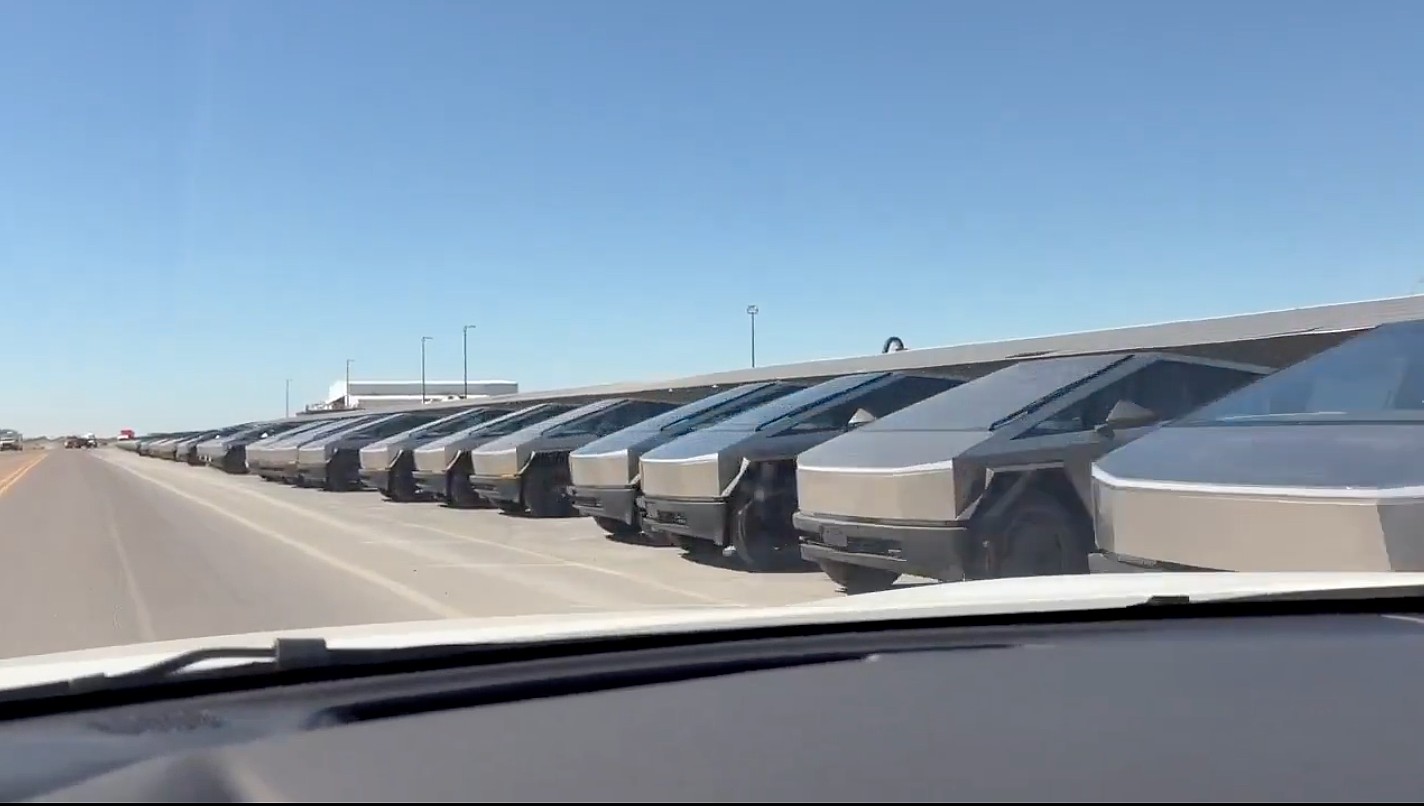
Tesla Cybertrucks have taken over at SpaceX’s Starbase facility in Texas, as hundreds of the all-electric pickup trucks were spotted late last week rounding out a massive fleet of vehicles.
The Cybertruck fleet is geared toward replacing gas vehicles that are used at Starbase for everyday operations. The only surprise about this is that it was not done sooner:
Was just visiting. pic.twitter.com/5Q9wPPaeuH
— Derek Li (@derek1ee) October 31, 2025
Deliveries have been going on for a few weeks, as Cybertrucks have made their way across the state of Texas from Austin to Starbase so they could be included in SpaceX’s fleet of vehicles at the facility.
Interestingly, the Cybertruck uses the same exterior, a stainless steel alloy, as SpaceX rockets. This synergy between the two companies and their very different products shows a very unified mentality between Musk companies.
However, there are some other perspectives to consider as SpaceX is utilizing such a massive fleet of Cybertrucks. Some media outlets (unsurprisingly) are seeing this as a move of weakness by both Tesla and SpaceX, as the aerospace company is, in a sense, “bailing out” lagging sales for the all-electric pickup.
It’s no secret that Tesla has struggled with the Cybertruck this year, and deliveries have been underwhelming in the sense that the company was anticipating between 1 million and 2 million orders for the vehicle before it was widely produced.
A lot of things changed with the Cybertruck between its 2019 unveiling and 2023 initial deliveries, most notably, price.
The price of the Cybertruck swelled significantly and priced out many of those who had pre-ordered it. Some have weighed the option of whether this purchase was a way to get rid of sitting inventory.
However, it seems more logical to consider the fact that SpaceX was likely always going to transition to Teslas for its fleet, especially at Starship, at some point.
It doesn’t seem out of the question that one Musk company would utilize another Musk company’s products, especially considering the Cybertruck has been teased as the vehicle that would be present on Mars.
News
SpaceX opens up free Starlink service for those impacted by Hurricane Melissa

SpaceX is opening up its internet service, Starlink, to those impacted by Hurricane Melissa, as it made landfall in Jamaica and the Bahamas as a Category 5 storm.
Hurricane Melissa is expected to reach wind speeds of over 165 MPH over the next few days as it extends out into the Atlantic Ocean by Thursday and Friday.
Satellite imagery shows Hurricane #Melissa‘s growth from its formation on October 21 to a Category 5 hurricane through October 27, 2025. #HurricaneMelissa pic.twitter.com/goR3Hbgb9c
— The Weather Network (@weathernetwork) October 27, 2025
Citizens in Jamaica and the Bahamas have been preparing for the storm for the past week, getting necessary goods together and preparing for the massive storm to arrive. It finally did yesterday, and the first images and video of the storm are showing that it could destroy many parts of both countries.
Starlink is now being opened up for free until the end of November for those impacted by the storm in Jamaica and the Bahamas, SpaceX announced today:
For those impacted by Hurricane Melissa in Jamaica and the Bahamas, Starlink service is now free through the end of November to help with response and recovery efforts → https://t.co/fUko3xSviJ
— Starlink (@Starlink) October 28, 2025
It is a move similar to the one the company made last year as Hurricane Helene made its way through the United States, destroying homes and property across the East Coast. SpaceX offered free service for those impacted by the destruction caused by the storm.
The free Starlink service was available until the end of 2024.
Elon Musk’s companies have also made similar moves to help out those who are impacted by natural disasters. Tesla has offered Free Supercharging in the past, most notably during the California wildfires.
Tesla and SpaceX’s LA fire relief efforts: Cybertrucks, free Starlink and more
One major advantage of Starlink is that it is available for use in situations like this one, where power might be required to operate things like a modem and router.
Internet access is a crucial part of survival in these situations, especially as it can be the last leg some stand on to get in touch with emergency services or loved ones.
News
SpaceX reaches incredible Starlink milestone
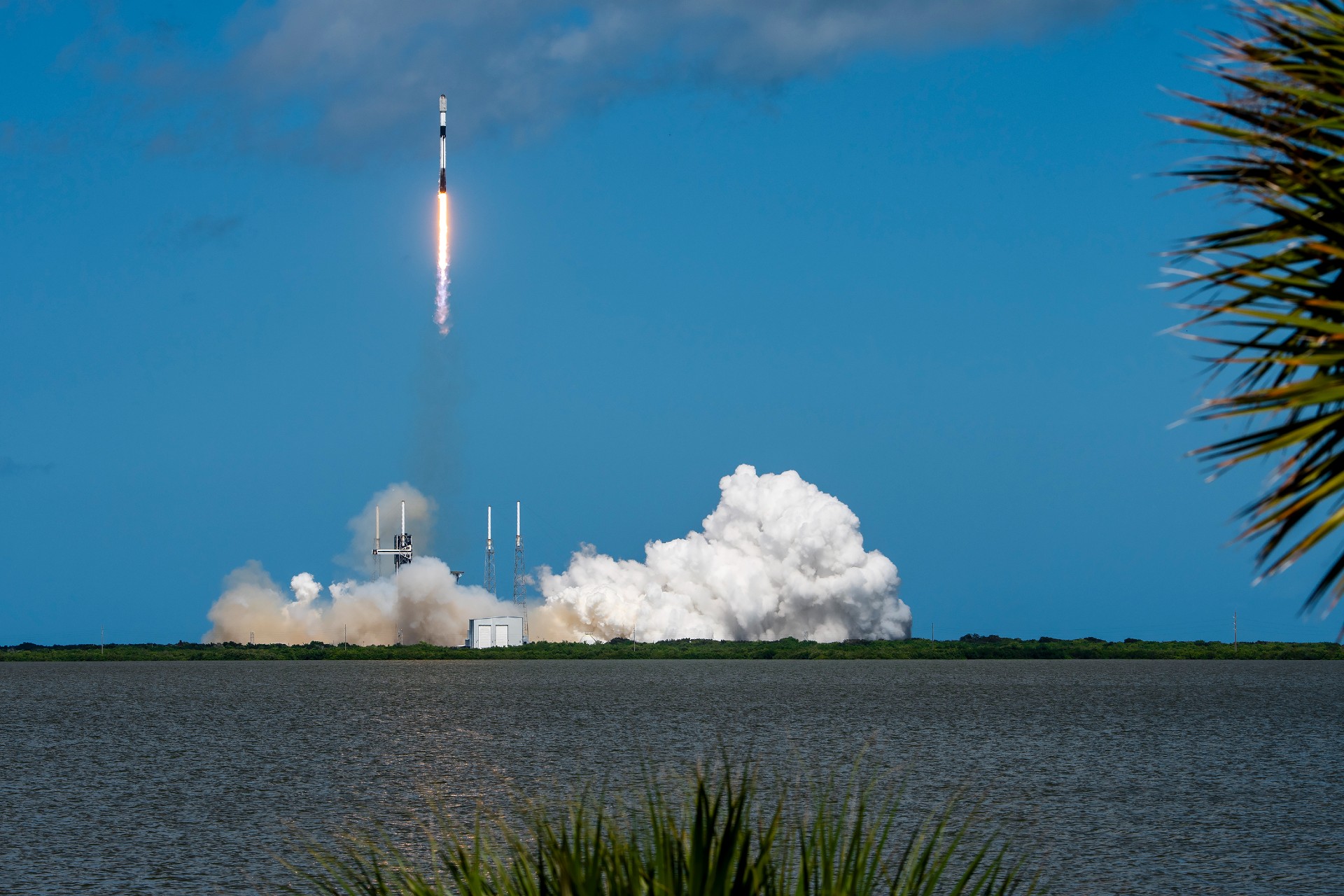
SpaceX has reached an incredible milestone with its Starlink program, officially surpassing 10,000 satellites launched into low Earth orbit since starting the program back in 2019.
Last Sunday, October 19, SpaceX launched its 131st and 132nd Falcon 9 missions of 2025, one from Cape Canaveral, Florida, and the other from Vandenberg, California.
The 10,000th Starlink satellite was aboard the launch from California, which was Starlink 11-19, and held 28 v2 mini optimized satellites.
The achievement was marked by a satellite tracker developed by Jonathan McDowell.
🚨 With its Falcon 9 launch last Sunday, SpaceX officially has 10,000 Starlink satellites in orbit pic.twitter.com/xS5RVZ4ix0
— TESLARATI (@Teslarati) October 26, 2025
The first Starlink launch was all the way back on May 23, 2019, as SpaceX launched its first 60 satellites from Cape Canaveral using a Falcon 9 rocket.
Of the over 10,000 satellites in orbit, the tracker says 8,608 are operational, as some are intentionally de-orbited after becoming faulty and destroyed in the atmosphere.
SpaceX has truly done some really incredible things during its development of the Starlink program, including launch coverage in a global setting, bringing along millions of active subscribers that use the service for personal and business use, locking up commercial partnerships, and more.
Starlink currently operates in around 150 countries, territories, and markets and is available at least somewhere on all seven continents.
Additionally, Starlink has over 5 million subscribers worldwide, and 2.7 million have joined the program over the past year. It has revolutionized internet access on commercial aircraft as well, as several high-profile airlines like Qatar and United, among many others, have already installed Starlink on some of their planes to deliver more stable connectivity for passengers and crew.
SpaceX has the approval to launch 12,000 Starlink satellites from the FAA, but it plans to bring over 30,000 to its constellation, giving anyone the ability to have access to high-speed internet.
